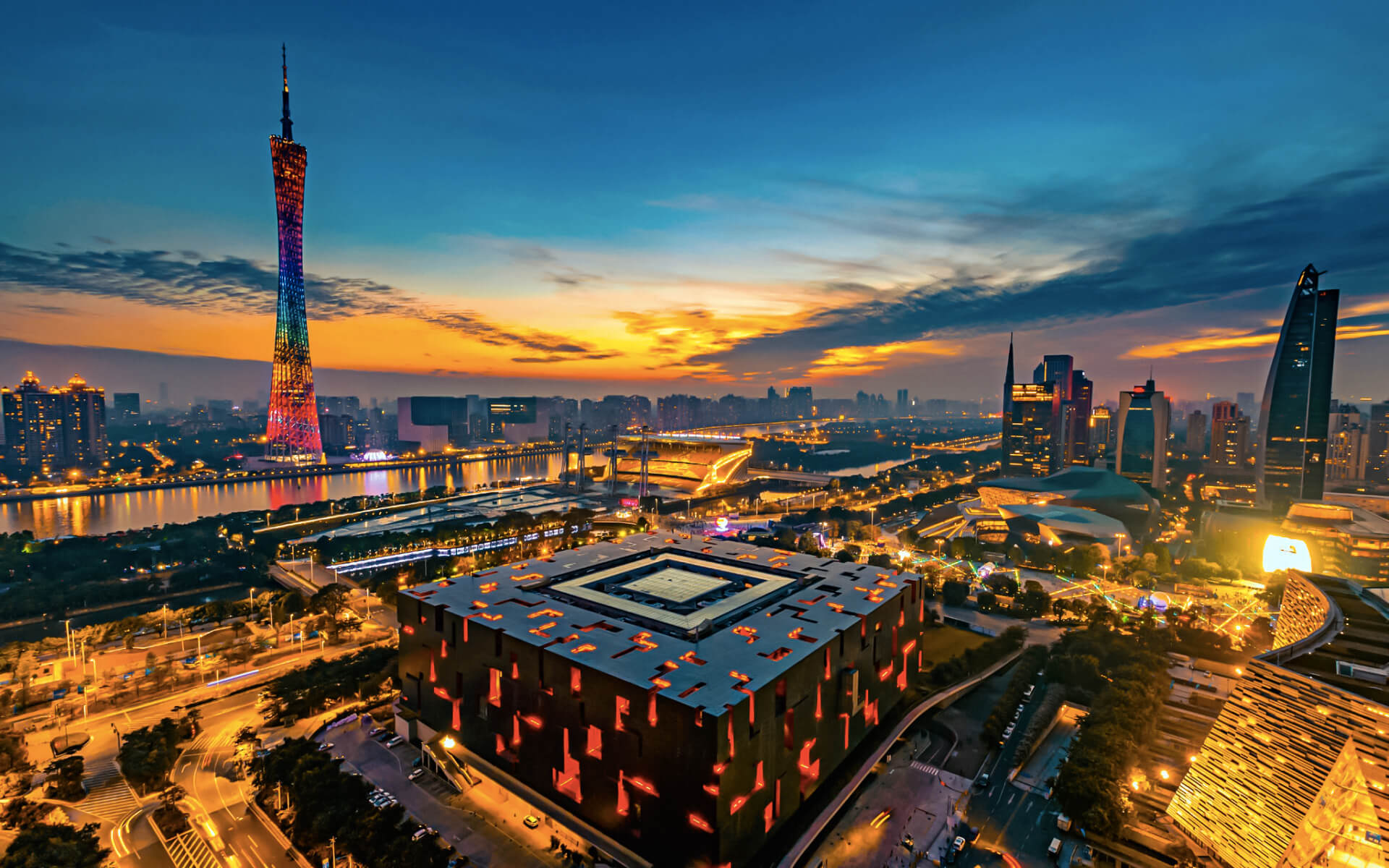- Night cruise on the Pearl River (珠江夜游)
Dashatou Pier (大沙头码头), Tianzi Pier (天字码头) and Xidi Pier (西堤码头) – This one to two hour evening cruise is a great way to see the Guangzhou skyline along the Pearl River, including a light show at Bai-E-Tan. Tickets for the luxury dinner cruise can be purchased at most high-end hotels. Prices range from 50 to 200 yen per person. High-end cruises usually include an evening buffet.
There is a vast system of small streets and alleys, green spaces, boulevards and parks that are perfect for cycling. You can explore the parks, temples, markets and quieter residential areas of Guangzhou. Some hostels offer bike rental for as little as 5 RMB per hour.
Cycle Canton – guided bike tours, +86 15626406926 ([email protected]””). Cycle Canton offers guided bike tours of Guangzhou. The tour winds its way through bustling old urban villages, where you mingle with the locals, to the ultra-modern architecture of the new city. The route through downtown Guangzhou, from Taojin to Pearl River New Town, is very safe and comfortable, as it is almost entirely car-free and runs mostly along picturesque lanes, green spaces, parks, markets and waterfront promenades. You will be amazed by the beauty of Guangzhou and the fascinating stories of the places we will visit, including ancient hutongs, temples, ancestral halls, parks, Kong Fu studios, islands and squares. Cycle Canton has hosted over 1,000 guests – tourists, expats and locals – since 2013. The tour is consistently ranked as the best activity in Guangzhou on TripAdvisor and has been featured in many local media. Guests need not be avid cyclists; child seats are available upon request. The tour lasts 4 hours, bike, helmet, guide, snacks and water are provided and the total cost is 300 RMB.
Eating Adventures, +86 18688380352. offers private and group tours of Guangzhou. Tours last about 3 hours and are led by licensed English-speaking guides. Cost from 399 RMB, all meals included.
South of the Chan Clan Academy, there is a vast network of unbuilt Hutong streets where tourists can immerse themselves in the daily lives of the people who live in these small alleys.
Walking Tour – Guangzhou Private Tour Guide by Janvi, +86 13826227014 ([email protected]). Janvi is a native of Guangzhou. He offers foreign visitors a guided tour in and around Guangzhou and helps foreign visitors discover the local culture and customs of Guangzhou. He will show you the old Guangzhou (Canton), which only the locals know, at low prices that the travel agencies do not offer. He will tell you about the historical Guangzhou as well as the modern Guangzhou and immerse you in the daily life of Guangzhou. The tour lasts between 7 and 10 hours and costs between 100 and 120 USD.
Cheap and safe. Electric streetcars are even cheaper, with a flat fee of ¥2. Get on one of the public buses. The drivers are usually very friendly and helpful. As long as you have enough change for the ride, tell the driver you just want to go for a ride. (In Cantonese, Yau Cheh Hor literally translates to “just for fun” or “just for the ride”. At the end of the ride, ask which buses will take you back and ask the driver to tell you when to get off. As long as you are not sitting too far away, he (sometimes she) will tell you. Don’t worry, everyone is very helpful on these buses. Fear of scams and suspected crimes takes the fun out of an otherwise wonderful vacation.
- River cruise” during the day
For only ¥2, you can go to the last terminal of ZhongSan University and back. Just tell the ticket seller at the pier in front of Riverside Hostel that you just want to take a ride. On the way back, you can walk down to the other side of the river, in the heart of the business district. After a walk of several hours or even a dinner, the return to Riverside Hostel will cost you only ¥1.


